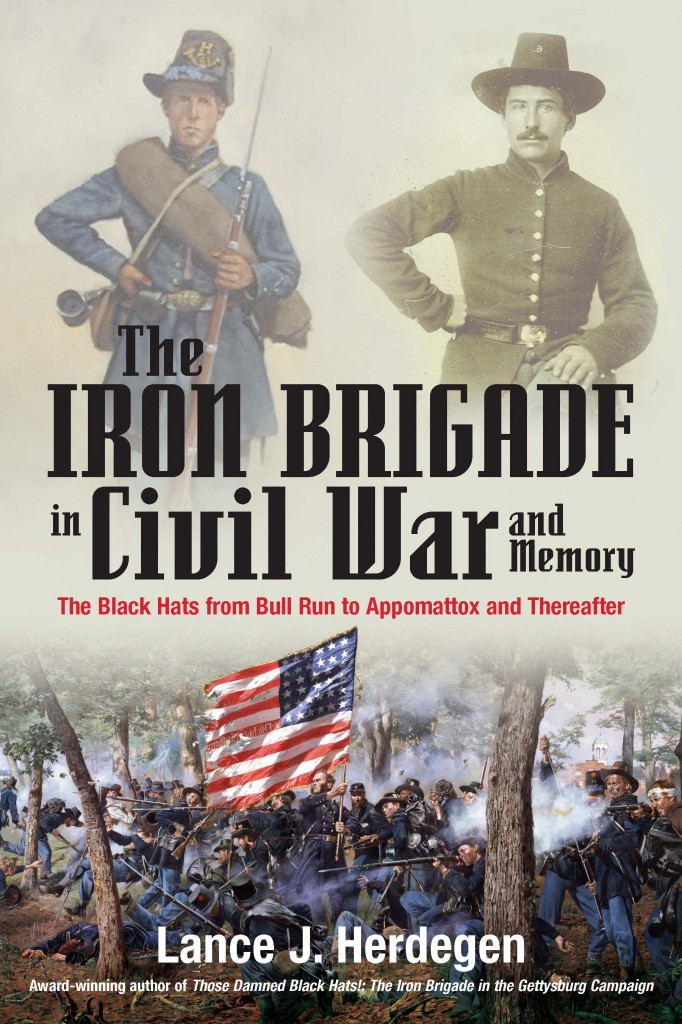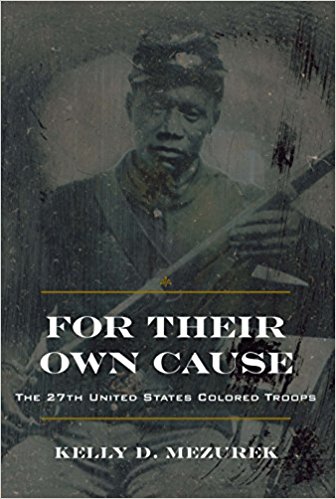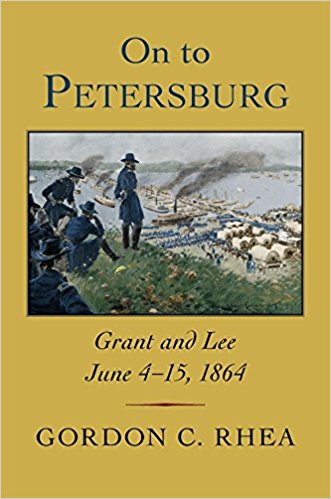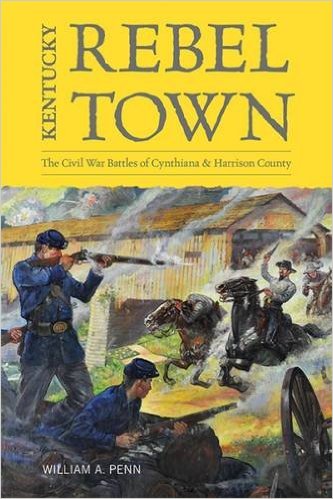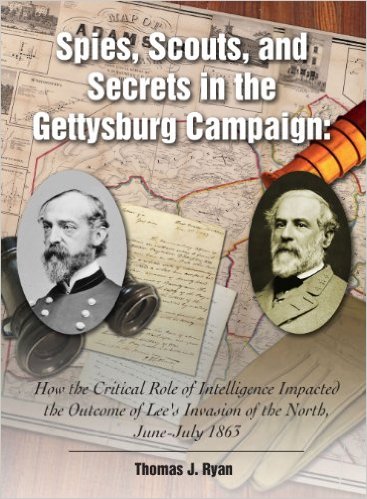Few infantry units in the Federal or Confederate armies match the Iron Brigade in reputation or accomplishment. Distinguishing themselves at the Brawner Farm, on South Mountain, during the Battle of Antietam, and particularly on July 1, 1863, at Gettysburg, these five Midwestern regiments from Wisconsin, Indiana, and Michigan assembled a combat record that, according to author Lance J. Herdegen, “suffered the highest percentage of loss of any brigade in the Union armies” [xi].
Alan T. Nolan cemented the Iron Brigade’s place in Civil War history with the publication of his classic unit history in 1961 (The Iron Brigade, New York: Macmillan). Now respected Iron Brigade scholar, Lance Herdegen, offers an expanded chronicle of this famous outfit justified, he asserts, by the volume of new source material available since Nolan’s work half-a-century ago. The product is a 618-page narrative that yields in equal parts laudable and lamentable results.
There is much to embrace in this well written and richly illustrated review of the Iron Brigade’s origins, combat record, and legacy. Many authors of unit histories struggle with maintaining a balance between providing sufficient context for readers to understand the unit’s role while not burying their soldiers under superfluous detail. Herdegen, with one major caveat, does a masterful job of blending the story of the Iron Brigade with the unit’s military milieu. He has, indeed, utilized a range of fresh source material to provide some spectacularly quotable battle accounts. Descriptions of the stand-up fight at the Brawner Farm on August 28, 1862, for example, are vivid and moving (173-75). The author’s review and analysis of how the unit received its nom de guerre is particularly useful and reflects careful research. Herdegen’s prose is lively and fast-paced and the publisher deserves special kudos for providing footnotes rather than endnotes. The book contains a remarkable collection of photographs—mostly of Iron Brigade members—that enhance its value to those with ancestors in the unit. Combat maps are attractive and accurate although they are more general than one might expect in a history of this nature.
Some readers might have wished for tighter editing to reduce the heft of the volume, which is inflated with numerous anecdotes that lie outside the mainstream narrative. Many of these tales are alternately amusing and poignant and deserve publication. What better place for such tidbits than a unit history, even if the result is a tome that stretches beyond bulky?
This is not to say that The Iron Brigade in Civil War and Memory is devoid of editorial weakness. In fact, extremely poor editing is this book’s primary downfall. The list of editorial sins includes multiple typographical and spelling errors, redundancies, and most disheartening, a plethora of factual faux pas that might have been easily corrected had the author been more careful or the publisher engaged better “readers” and fact-checkers.
A few examples of these frequent problems include misspellings of Culpeper, Middletown, and Stephen Douglas. We find “tens of hundreds” of soldiers wandering about Gettysburg [414] and 6th Wisconsin stalwart Rufus Dawes is referred to as “Lucius” [308]. We are told twice about Governor Harvey’s drowning in the Tennessee River [77, n. 5 and p. 145] and that Lardner and John Gibbon served as groomsmen in D. H. Hill’s wedding [222, n. 17 and p. 241]. The fact that a brigade flag is preserved in the Wisconsin Veteran’s Museum is mentioned in a footnote and a photo caption on the same page [448]. An isolated instance or two of such oversights would constitute a minor distraction unworthy of mention but, sadly, they appear with distressing regularity.
More troublesome are factual errors that raise serious questions about the author’s understanding of military events, particularly in the chapters dealing with the brigade’s experience after Gettysburg. The context provided for the Overland and Petersburg campaigns contains a staggering number of bloopers from mistiming the fighting along the Orange Turnpike on May 5 in the Wilderness to misidentifying the commander of the Confederate cavalry at Five Forks. Herdegen dismisses activities at Petersburg in September and October 1864 as “monotonous siege duties” completely ignoring the bloody multi-day Union offensives during those months.
At least some of these historical missteps may stem from Herdegen’s reliance on several serialized memoirs published in postwar newspapers and other veterans’ recollections. While such sources provide quotable anecdotes and useful vignettes, they provide an unsteady platform upon which to carry the narrative burden. For example, Herdegen’s garbled account of affairs following the Battle of the Crater is taken from a 1906 soldier memoir, which is predictably confused. A cursory consultation of any number of reliable modern studies would have alleviated this shortcoming.
The author and the publisher share culpability for Herdegen’s occasionally poor use of citations. Too often narrative material, including quotations, goes undocumented. In other cases quoted material is attributed to illogical sources. For example, Rufus Dawes described Colonel Edward Bragg’s wounding at Antietam but the citation is to a letter written by Bragg [257, n. 72]. Finally, the author’s decision to list manuscript sources alphabetically by first name in his bibliography is sufficiently unconventional to have caught the attention of the publisher.
Despite these cautions, The Iron Brigade in Civil War and Memory is a worthy addition to the history of the Army of the Potomac. Its fresh material and unpublished soldier portraits merit the patronage of those interested in one of the Civil War’s most famous units. But if you must own only one history of the “Black Hats,” stick with Alan Nolan.
A. Wilson Greene is the Executive Director of Pamplin Historical Park and the National Museum of the Civil War Soldier in Petersburg, Virginia.
